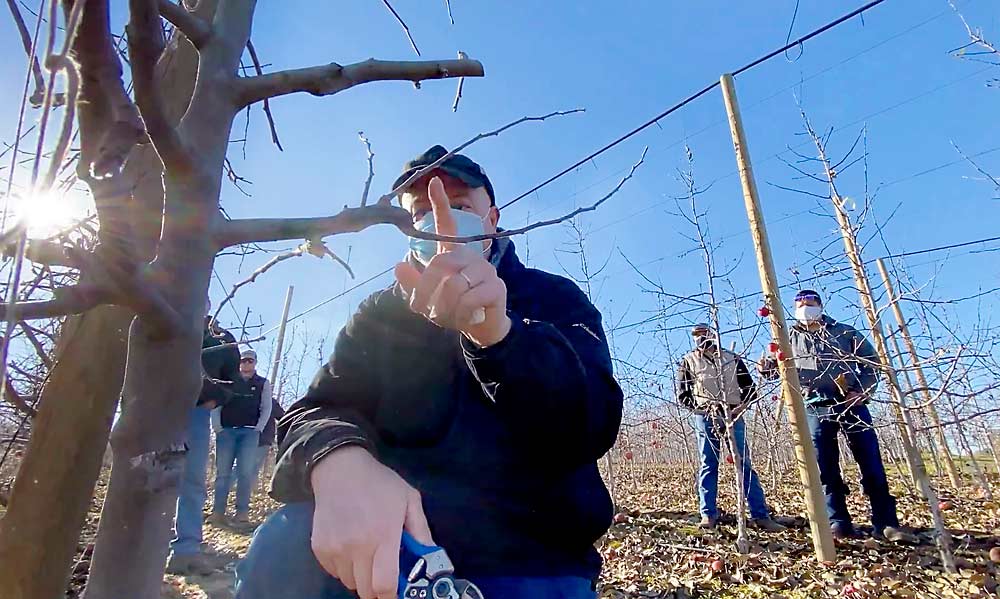
Across Washington, WA 38 trees are maturing into full production. That means growers need to approach winter pruning to strike the right balance between crop load and renewal to manage the tip-bearing variety’s tendency for blind wood.
From the perspective of crop load, managing WA 38, the apple marketed as Cosmic Crisp, always comes back to pruning, according to Stefano Musacchi, endowed chair for tree fruit physiology at Washington State University and an expert on WA 38 horticulture.
“You need some spurs that are resting and some that are producing. So, you want as many regenerative points as possible,” Musacchi said to growers gathered at a September field day organized by WSU. Growers have learned more about the variety over the past few seasons, he said, and “now, you have a feeling about what I have been trying to say about blind wood and keeping the trees producing for many years.”
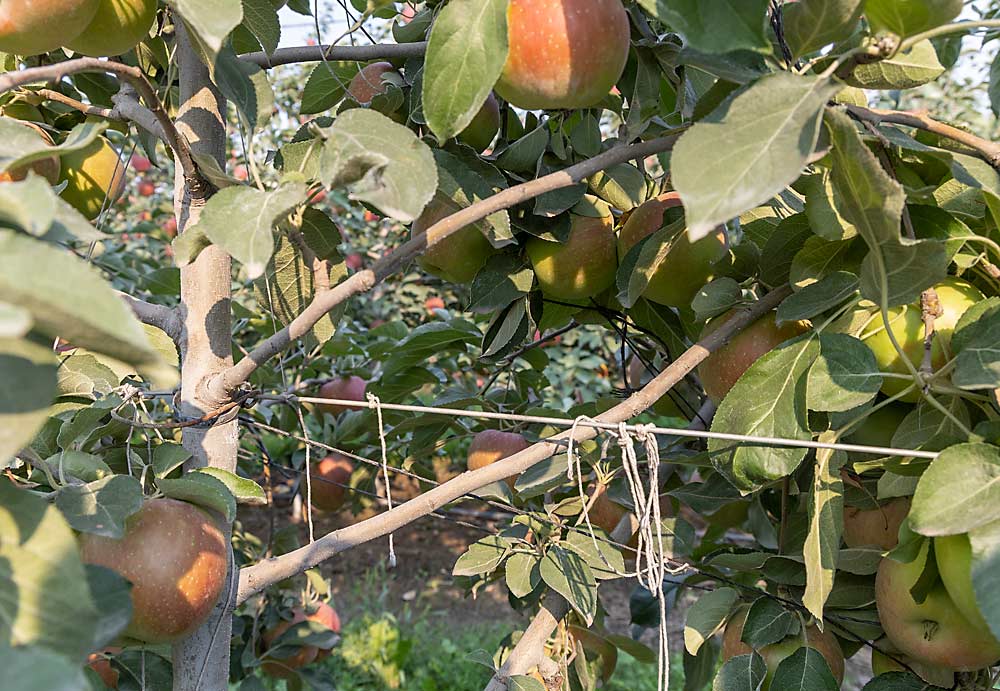
Because the variety self-thins — an advantage in that it minimizes the cost of thinning — pruning represents the primary tool for controlling crop load.
“It’s hard to manage crop load with a variety that only sets one cluster,” he said. Research has shown that 51 percent of the clusters set one fruit, 13 percent set two and the rest set none, so he recommends maintaining a high number of flower buds when pruning.
Since WSU released WA 38 in 2016, Musacchi has given many talks and tours focused on pruning and training. He encourages the click pruning approach: a cycle of heading cuts that promote renewal of young fruiting wood and prevent the variety from pushing out of its space in high-density systems.
Monument Hill Orchards in Quincy, one of the field day stops, is a testament that “click pruning works,” said Harold Schell of Chelan Fruit.
“When Stefano started working with us in the second leaf, we were really scratching our heads about how this looked when we pruned it,” he said. “The proof is in the pudding today.”
Orchard manager Jorge Acevedo said the fourth-leaf block appeared to carry about 65 to 70 bins per acre, after cropping 31 bins per acre last year. Over the past few years, working directly with four employees at a time, he taught his crews the new style they use for pruning WA 38. Making stub cuts that encourage renewal, rather than cutting out limbs entirely, is key, he said.
Winter pruning
In early 2021, the Yakima Pom Club invited Musacchi to visit a handful of orchards in the Yakima Valley to talk about pruning maturing orchards. Growers who heavily cropped young trees may find they don’t have as many productive spurs as they hoped for the next season, due to the natural spur extinction tendency of this cultivar, Musacchi said.
“Don’t overcrop at the beginning, because you will need to build everything again,” he said. Growers should “adjust WA 38 pruning on the basis of the flowers you have.”
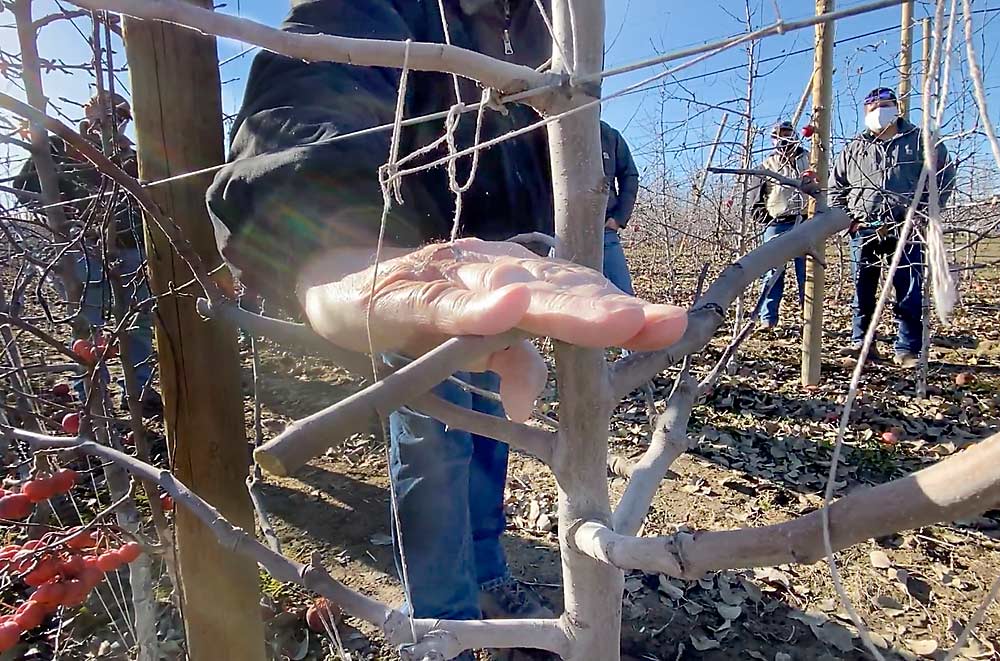
For Trevor Perrault, owner of Green Acre Farms, it was an eye-opening visit.
“We thought we had a pretty good idea of what we were doing with the click pruning and the summer pruning, but (Musacchi) came out and it changed everything,” Perrault said. “He said, ‘You don’t have enough fruit buds, so you don’t want to click prune everything; all your fruit is out on those tips, you don’t want to cut it off.’”
The fourth-leaf WA 38 block, trained in a single-leader system planted at 2-foot by 12-foot spacing, was showing signs of bud extinction on branches, pushing the flower buds out to the tips.
Like many Washington growers eager for returns, Perrault loaded fruit on the trees in the third leaf, “but maybe we should have thinned it out to have less stress on the tree and more wood coming in,” he said. “In the third leaf, it (bud extinction) wasn’t an issue because that was all fresh spur wood, but the solution is to keep regenerating wood, even in these young trees.”
Now, he and his orchard managers have set rules for approaching WA 38. It starts with managers counting buds, to get a profile of each block, before pruning. Then, they train pruners to start with renewal cuts, two or three per tree, and then thin out crossing or overlapping limbs. The bud count determines how to balance click pruning with leaving the short dards untrimmed, because they carry fruit buds on the tips, Perrault said.
“It’s really spending a lot of time with the crew,” he said. “It’s such a new thing for us, how this apple grows. We’re learning; they are learning.”
Similarly, Borton Fruit orchard manager Jack Anderson said his most experienced crews prune WA 38.
“What scares me is the blind wood,” Anderson said. In a single-leader spindle block planted at 3 feet by 12 feet, he trains crews to use a stub cutting approach, leaving at least 4 inches on each limb they cut back, which usually results in two shoots breaking. Then, they head one shoot and leave the other — the one with the best position and growth angle to crop.
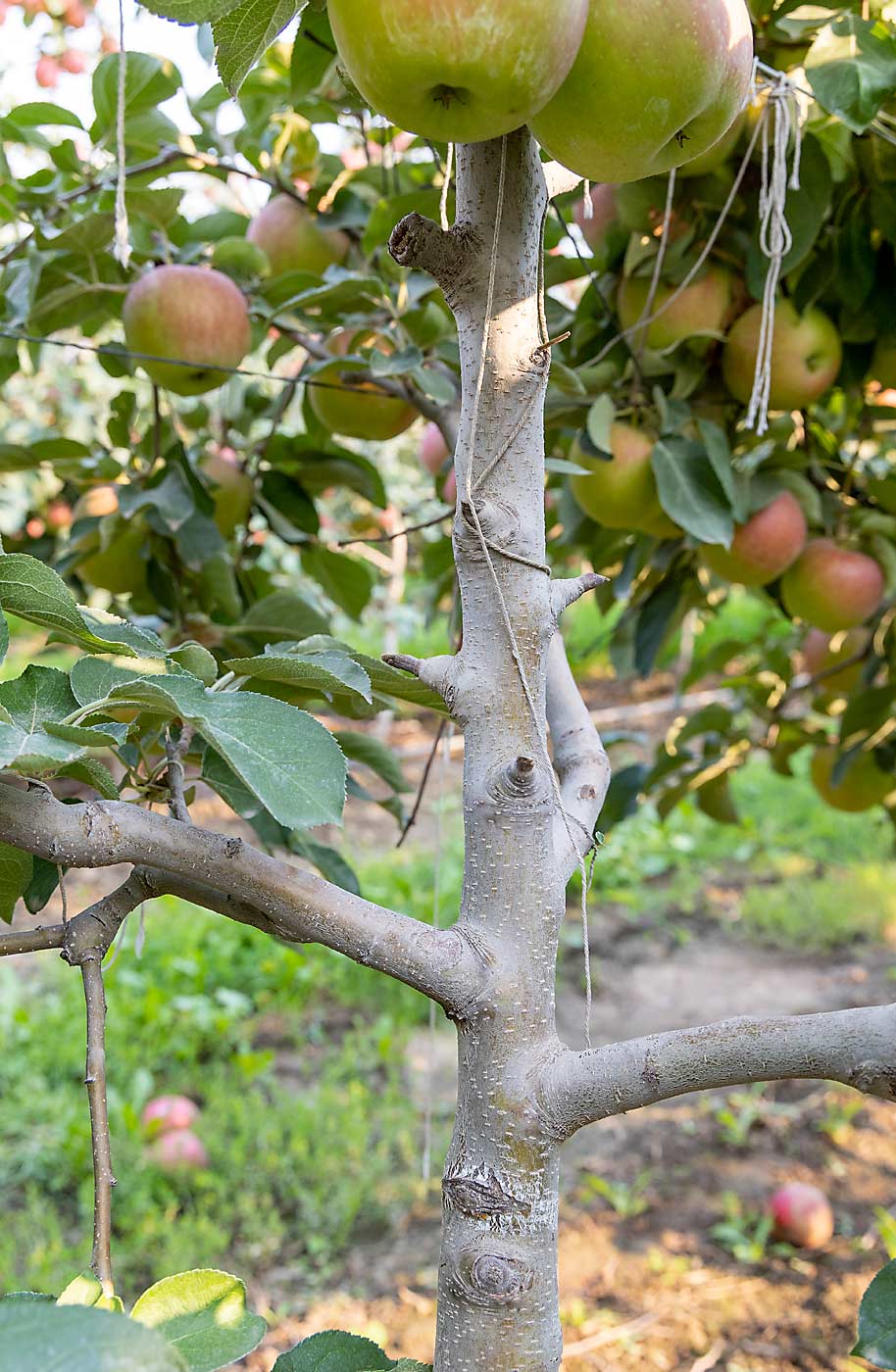
“That way we always have a place to go back for renewal,” he said, describing a cycle of short and long cuts that results in a mix of fruiting wood for now and looking ahead for next year’s renewal.
The block cropped nearly 70 bins an acre in the third leaf, he said, since it had already filled its space. Anderson expects that it will probably yield around 70 bins this year, too, after a little loss to heat stress.
When Musacchi visited in the winter, he worried that the heavy cropping in 2020 may have resulted in some blind wood, which it did, but Anderson said he had enough options on the trees that he wasn’t worried about the 2021 or 2022 crops.
“We’ve got a lot of limbs in there, maybe more than we should, but that’s how we do things,” he said. “If you want to make a pretty tree, forget about it.”
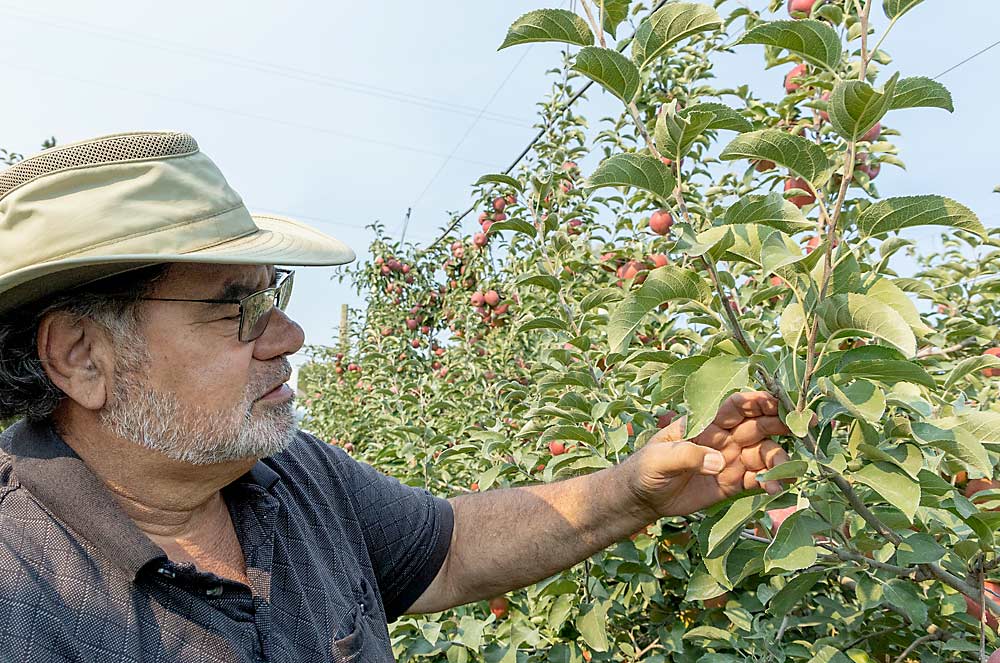
“Options” is the key word for grower Mark Hanrahan’s approach to pruning WA 38, as well.
“What I created on my trees are options for fruit set,” he said. In his two-leader system, it’s a simple structure designed to create lots of lateral branches that are regularly renewed.
“You want small dards, because it’s a tip bearer,” he said. “It behaves like a cherry or a pear. It made sense to me because I’m a cherry guy.”
He learned that the hard way, he added. He planted in 2017, a year ahead of many of his neighbors, so he was one of the first to see that pruning it like a Gala or a Granny wasn’t working. That’s why he worked with the Pom Club to invite Musacchi to tour orchards and talk through pruning approaches. This year, however, he has a beautiful crop, he said in August.
Anderson, likewise, was feeling optimistic that his approach to the new variety is working.
“The really nice thing about Cosmic Crisp is that we haven’t done anything but grow them,” he said. “No chemical thinning, no hand thinning, just growing.” •
—by Kate Prengaman

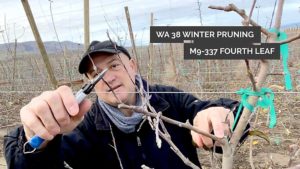
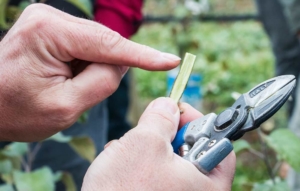





Leave A Comment